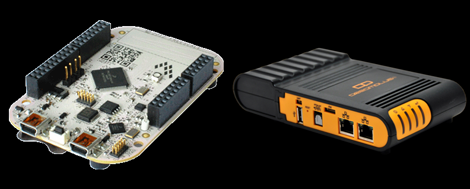
Hey, it’s a hardware twofer! Here’s two platforms coming down the pipe:
First up is the Mimo Dreamplug, the latest in a continued expansion of choices for very tiny, single-board Linux computers. The Dreamplug should be extremely capable of just about any task you can throw at it. With a 1.2GHz Marvell Sheeva CPU, eSATA, fiber optic/TOSLINK, WiFi, Bluetooth, two Gigabit Ethernet connections, and 512 MB of RAM, we’re thinking this could be used for just about anything. It’s a little pricy at $250, but that’s what you pay for all those features. No idea when it will be available, though. Never mind, you can get the same thing for $150 here. Thanks, [Scott].
Next up is the Kinetis KL25Z Freedom Board, an Arduino-compatable, Cortex-M0+ based dev board being made available for pre-order. The specs on this machine seem pretty good – with a 48MHz ARM chip, on-board accelerometer, a capacitive touch ‘slider’ built into the PCB, and OpenSDA for a USB debug interface, you should be able to make a few cool projects with this board. As a neat bonus, it costs $13, and Freescale is giving away a version of their Codewarrior development environment (limited to 128kB, but that’s all the Flash the Kinetis has). Hopefully, it’ll be a much more open development platform than what our own [Mike Szczys] has been able to wrangle from the STM32 board that has been floating around. The Kinetis should be available this fall.
Thanks [Impulse405] and [Hussam] for sending these tips in.











